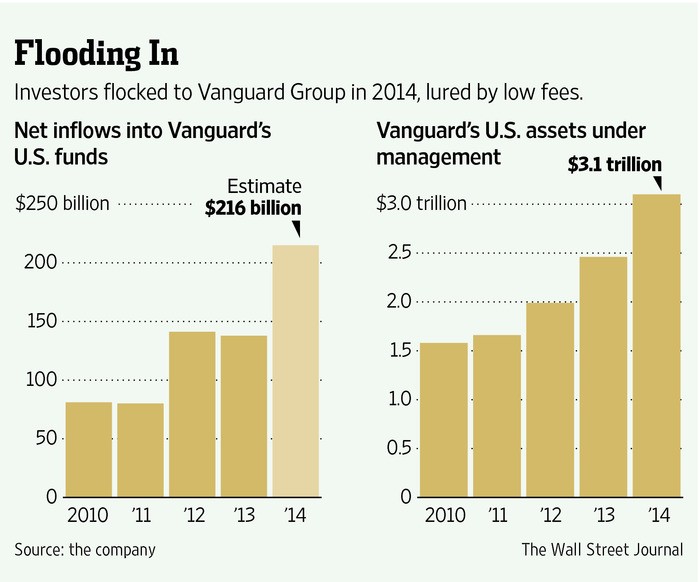Morningstar puts mutual funds on a podium
Post on: 17 Июнь, 2015 No Comment

ChuckJaffe
BOSTON (MarketWatch) — Most investors don’t know it yet, but the way they buy and sell mutual funds has just changed — maybe for the better.
Morningstar Inc. officially released its “analyst ratings” this week, the first time it has actually told investors which funds its analysts believe will be the best in the future. Once investors see the new system, there will be no going back to the way they’ve picked funds in the past.
Our Trading Deck has been home to a spirited debate over whether were in for a crash.
That’s largely because investors have misused the investment research firm’s popular star ratings, which was designed to describe a fund’s past performance compared with the risks it was taking.
The star system was meant to be objective. Stars based on risk-adjusted returns within a fund’s peer group are given on a curve, so the top 10% of a category get five stars, the next 22% earn four stars, the middle 36% receive three stars, and so on.
Instead, investors treated the stars as an endorsement of which funds were likely to perform best. Studies show that more than 90% of all money flowing into funds goes into issues that carry four- or five-star ratings.
The new analyst ratings, however, are an actual opinion of which funds have everything in place to be stellar performers. They replace the firm’s “analyst picks,” which means that the top ratings clearly are a recommendation on which funds to buy.
Performance pillars
You might say Morningstar is putting the funds through an Olympic competition, because it is bestowing gold, silver and bronze awards on the winners.
The ratings are based on what Morningstar analysts call the “five pillars.” These are qualities that institutions frequently use in their investment decisions, including process (investment strategy and execution), performance (results versus expectations over time), price (expense ratios); people (management skill, conviction and dedication to the fund), and parent (stewardship grade, a Morningstar measure of the quality of governance).
Putting funds through Olympic trial
Morningstars new mutual-fund ratings grade more than just past performance, and thats good for investors, Marketwatch Columnist Chuck Jaffe says.
Gold-rated funds are “best of breed.” Silver funds purportedly have notable advantages across several of those five pillars, and bronze funds have plusses that outweigh their minuses in those key areas that Morningstar believes predict future success for a fund.
All the others get branded either “neutral” or “negative.”
Here’s where the fund-picking game changed, because investors don’t settle for “good” when “better” is available.
Morningstar released ratings on 350 funds this week; over the next year, it will add another 1,150 or so. But by then the vast bulk of money flowing into funds will go to issues with both a positive analyst score and a quality star rating.

So for example, Vanguard Energy VGENX, -1.02% Vanguard GNMA VFIIX, +0.00% and Vanguard Dividend Growth VDIGX, -0.65% funds look like slam dunks in their respective asset classes, because they carry five stars and a new gold rating.
By comparison, the four stars of Vanguard Morgan Growth Fund VMRGX, -0.38% don’t look so great with the neutral analyst’s rating. And something built to be ultra-safe, such as Wells Fargo Advantage Ultra Short-Term Income Fund SADIX, +0.00% might have looked good with its four stars, but the negative rating will get people thinking twice about it.
Conversely, investors in funds with superior long-term records may be able to sit tight while their fund gets a good analyst rating. For instance, investors in one-star Clipper Fund CFIMX, -0.63% or two-star Davis New York Venture NYVTX, -0.61% and Dodge & Cox Balanced DODBX, -0.47% funds might stick around; despite the low star count, those funds get a gold rating.
“We still believe in the star rating or we wouldn’t keep it out there,” said Karen Dolan, Morningstar’s director of fund analysis, “but this is subjective, and it allows you to make sure that you’re not just looking at performance. … If everything is in place for a fund like Clipper to succeed — and we still think it is — then a run of poor performance alone should not make you think it will be a bad fund in the future.
She added: “Then you look at a fund like Ariel ARGFX, -0.57% which gets one star like Clipper, but where the performance disappointment has been so severe … and where we have enough reservations about its ability to perform in the future that it’s positive but just at the bronze level.”
Dolan noted that even a neutral rating is not a sell signal, saying that someone who looks in their 401(k) plan and sees a four-star fund with a neutral rating should not think “I need to bail out. … They don’t have the best of breed, but they don’t have a fund that is completely scary.”
Further, Dolan and Morningstar’s analysts are quick to note that they don’t believe their new ratings are the only tool anyone needs to invest.
“It’s not a complete solution,” Dolan said, “it just gives you a signal from us, saying this is our view on the fund’s ability. It doesn’t take your needs into consideration, and it doesn’t suggest an asset allocation, but if you know what you are looking for, it should help you make a decision you’re comfortable with.”
Maybe, but investors will use it for more than that; only time will tell if that’s really an improvement in how people pick funds.














